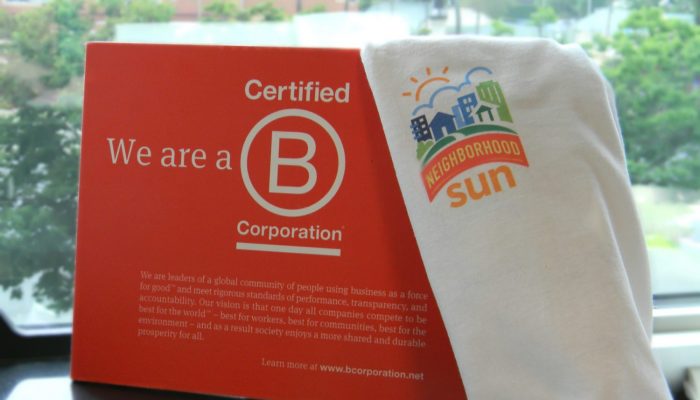
Before I started at NS, my old roommate and I had a common goal: keep our electric bills down. In the winter, we bubblewrapped our windows as insulation and would layer up in multiple sweaters instead of turning the heat on. In the summer, the AC was only used if we had guests complaining about the heat. We were spending the majority of our paychecks on rent and couldn’t spend too much on our electric bill on top of that. But the lower we kept that bill, the lower we kept our carbon emissions.
Study after study show that income is directly related to CO2 output. Living in a modest home naturally uses less electricity than Jeff Bezos’ mansion. As income increases, so does one’s CO2 footprint, no matter what other lifestyle choices an individual takes to support the environment. This applies to more than the electricity used proportional to your home. For example, your carbon footprint is much lower if you walk or take public transit to work instead of driving your own car. Buying brand new clothing is less sustainable than hand-me-downs from a neighbor or shopping for thrift/vintage clothes. Yet historically, clean energy programs have been limited to those who could afford to pay a premium for clean energy, or had houses with new roofs and could afford the upfront costs of solar panels.
It’s unfair that those least responsible for the climate problem are also those who are hardest hit by the results. A recent NPR report shows that across Baltimore, the hottest areas tend to be less wealthy, a pattern repeated in dozens of major U.S. cities. From 2013 to 2018, Medicaid patients in Baltimore’s hottest areas visited the hospital at higher rates than Medicaid patients in the city’s coolest areas. Patients in the city’s hot spots visited more often with several conditions, including asthma, COPD and heart disease. As the climate crisis continues, residents in less wealthy areas will only be exposed to greater temperature fluctuations and even more health risks. They’ll also have the least flexibility to relocate to more climate-friendly areas or be able to afford extensive treatment for their ailments.
That’s why Neighborhood Sun is working to make sure Solar Helps Achieve Resident Equality (SHARE). For customers that are in the income bracket putting out the least CO2, we offer a greater discount to help them save more on their electric bills. It’s as simple as filling out our standard application and providing some form of document to show you’re in our low-polluter income bracket. Voila! 25% savings on your electric bill. You deserve a share of the benefits of clean energy as people who are most affected by the effects of climate change. You deserve to share in savings as people who are contributing the least to the problem. You deserve a share of a climate solution that’s accessible to everyone, not just a select few.
If you are getting solar from: